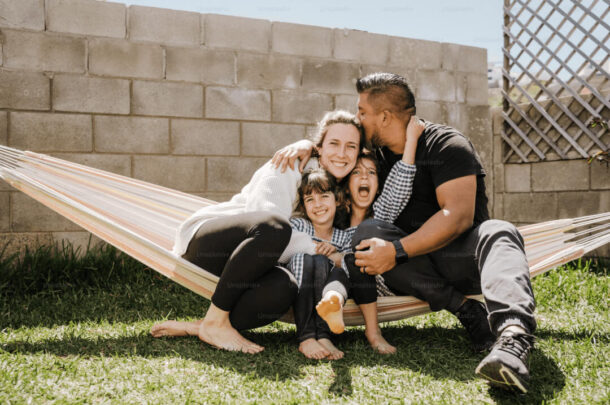Introduction
Picture this: Your three-year-old just took their first independent bike ride, wobbling down the sidewalk with the biggest grin you’ve ever seen. Your instinct? Grab your phone and share that pure joy with the world. But as your finger hovers over the “post” button, a nagging thought creeps in—is this safe?
You’re not alone in this dilemma. Welcome to the complex world of “sharenting”—the practice of parents sharing content about their children online. While it feels natural to celebrate our kids’ milestones and connect with other parents, the digital landscape of 2025 presents unprecedented challenges that require us to think differently about what we share.
The Reality of Sharenting in Today’s Digital World
Let’s be honest—sharing our children’s lives online has become second nature. Whether it’s that adorable bedhead photo on Instagram, a proud moment at the school play on Facebook, or a funny video on TikTok, we want to capture and share these fleeting moments that make parenthood so special.
But here’s what’s changed: the internet isn’t the same place it was even five years ago. With AI technology advancing at breakneck speed, data scraping becoming more sophisticated, and privacy breaches making headlines weekly, that innocent photo of your child could have consequences you never imagined.
Recent studies show that 92% of American children have an online presence before their second birthday. By age five, most kids have hundreds of photos and videos shared about them online. While this might seem harmless, cybersecurity experts warn that we’re creating detailed digital profiles of our children without their consent—profiles that could impact them for decades to come.
Why This Matters More Than Ever
Sarah, a mother of two from Portland, learned this lesson the hard way. “I was sharing everything—first steps, first words, even potty training victories,” she recalls. “Then my tech-savvy sister showed me how much personal information I was actually putting out there. Full names, our neighborhood, the kids’ school—I was basically creating a roadmap to our family.”
The wake-up call came when Sarah discovered that photos she’d shared in a local parenting group were being used on a fake family blog overseas. “Someone had taken my daughter’s photo and was pretending she was their child,” Sarah says. “It was terrifying and eye-opening.”
This isn’t meant to scare you away from sharing altogether. Instead, it’s about being intentional, protective, and smart about how we navigate this digital parenting landscape.
What Experts Are Saying About Sharenting Risks
Child safety organizations and digital privacy experts have identified several key risks associated with unchecked sharenting:
Identity Theft and Data Mining: Children’s personal information is incredibly valuable to data brokers and malicious actors. Full names, birthdates, locations, and even physical appearances can be used to build comprehensive profiles.
Digital Kidnapping: This disturbing trend involves strangers taking photos of children from social media and claiming them as their own, often for various deceptive purposes.
Future Implications: What seems cute today might be embarrassing or even damaging to a child’s reputation years later. College admissions officers and employers increasingly check social media histories.
AI and Deepfake Concerns: Advanced AI technology can now manipulate images and videos in frighteningly realistic ways, potentially putting children at risk of having their likeness misused.
The Foundation of Responsible Sharenting
Before we dive into specific strategies, let’s establish the core principles of responsible sharenting:
- Privacy First: Always default to private rather than public sharing
- Child-Centric Thinking: Consider your child’s future perspective on what you’re sharing
- Consent When Possible: Include children in decisions about their digital presence
- Minimal Information: Share moments, not personal details
- Regular Review: Periodically audit your sharing habits and privacy settings
What Should Never Be Shared Online
Some content should remain private, no matter how cute or proud it makes you feel. Here’s what to avoid:
Personal Identifying Information
Never share your child’s full name, birthdate, address, school name, or any other information that could be used to identify or locate them. Instead of posting “Happy 8th birthday to Emma Johnson!” try “Celebrating my amazing 8-year-old today!”
Embarrassing or Vulnerable Moments
Bathtime photos, potty training updates, meltdowns, or disciplinary moments might seem funny at the moment, but they can become sources of humiliation later. Ask yourself: “Would I want this photo of me shared when I was having a hard time?”
Location-Specific Content
Avoid posting real-time locations or identifiable backgrounds. That photo at the local playground might seem innocent, but it tells strangers exactly where your child spends time.
School and Activity Information
Photos in school uniforms, team jerseys with names, or in front of identifiable buildings can provide too much information about your child’s daily routine and whereabouts.
Mastering Privacy Settings Across Platforms
Each social media platform has its own privacy landscape, and they change frequently. Here’s how to lock down your settings on major platforms:
Instagram Privacy Strategy
Set your account to private and regularly review your followers list. Use the “Close Friends” feature for child-related content, and turn off location services for the app. Consider creating a separate, highly private account specifically for family content.
For managing your Instagram content privately, a Magnetic Phone Mount can help you quickly access privacy settings while keeping your phone secure.
Facebook Family Sharing
Create custom friend lists and share child content only with close family and friends. Turn off facial recognition features and avoid posting in public groups. Consider using Facebook’s private group feature for extended family sharing.
A Laptop Privacy Filter can help ensure your privacy while browsing and adjusting settings on your computer.
TikTok Considerations
If you use TikTok, keep your account private and disable features that allow others to duet or stitch your videos. Be especially cautious about audio that might reveal personal information.
General Security Measures
Consider using a VPN service to add an extra layer of security when posting content online. This can help protect your location and browsing habits.
The Art of Obtaining Child Consent
One of the most important aspects of responsible sharenting is involving your children in decisions about their digital presence. This looks different at every age:
Toddlers and Preschoolers (Ages 2-5)
While young children can’t give informed consent, you can still model respectful behavior. Explain what you’re doing in simple terms: “I want to show Grandma your beautiful painting. Is that okay?”
Creating offline memories can be just as meaningful. A Reusable Notebook can help you document special moments privately while deciding what, if anything, to share online.
School-Age Children (Ages 6-12)
Children this age are developing their sense of privacy and social awareness. Start having conversations about online sharing: “How would you feel if your friends saw this photo?” Let them have veto power over posts about them.
Consider setting up a Digital Photo Frame for private family sharing. This allows you to share moments with distant relatives without posting publicly online.
Teenagers (Ages 13-18)
Teens should have significant control over their digital presence. Have open discussions about the long-term implications of social media posts and let them guide decisions about sharing their content.
Teaching digital literacy becomes crucial at this age. Resources like privacy-focused books and apps can help teens understand the importance of protecting their online presence.
Creating a Family-Sharing Strategy
Developing a family approach to social media sharing helps ensure everyone’s on the same page. Here’s how to create your own family-sharing guidelines:
Weekly Planning Sessions
Set aside time each week to review what you want to share. This doesn’t have to be formal—even a quick conversation over dinner can help you think through your posting decisions.
A Time Management Tool can help you balance online sharing with offline family time.
Alternative Sharing Methods
Consider private alternatives to public social media:
- Email newsletters to family members
- Private photo sharing apps
- Physical photo books and albums
- Video calls to share moments in real-time
Documentation Without Publication
You don’t have to share every moment to preserve it. Create private digital albums, use cloud storage for family photos, or maintain a private family blog that only relatives can access.
Age-Appropriate Sharing Guidelines
Different ages require different approaches to privacy and consent:
Early Childhood (0-5 years)
Focus on protecting your child’s future choices. Share general milestones without identifying information. Instead of “Emma’s first day at Sunshine Preschool,” try “Someone’s excited for their first day of school!”
Elementary Age (6-12 years)
Begin involving children in sharing decisions. Show them posts before publishing and respect their comfort levels. This age group is forming their social identity and may be sensitive about certain content.
Teenage Years (13-18 years)
Teens should have primary control over their online presence. Discuss the permanence of digital content and help them understand how today’s posts might affect tomorrow’s opportunities.
The Technology Tools That Can Help
Several tools can enhance your family’s digital privacy:
Photo Editing and Privacy Tools
Before sharing any photo, consider using editing tools to blur backgrounds, remove metadata, or crop out identifying information. Professional-quality photo editing subscriptions can help you share safely while maintaining image quality.
Secure Communication Devices
For families who want to share privately, consider devices designed for secure communication. Kid-friendly tablets with parental controls can help older children participate in family-sharing decisions safely.
Physical Memory Keeping
Don’t underestimate the value of offline memory keeping. Traditional photo albums and family journals can preserve memories without digital risks.
Real Stories from Real Parents
Lisa, a mother from Denver, transformed her approach to sharenting after her 10-year-old daughter asked her to stop posting about her. “She said her friends were teasing her about a photo I’d shared,” Lisa explains. “It broke my heart to realize I was embarrassing her without knowing it.”
Now, Lisa uses a private family-sharing app and asks her daughter’s permission before posting anything. “We’ve actually become closer because she feels respected,” Lisa says. “And I’ve learned that some of our most precious moments are better kept private anyway.”
Mark, a single father in Chicago, worried about maintaining connections with distant family while protecting his son’s privacy. His solution was a combination of private video calls and a secure digital photo frame that he sends to grandparents and close relatives.
“My son loves that he can decide what goes on the family frame,” Mark explains. “And I love that we can share our lives without worrying about strangers seeing his photos.”
Building Digital Literacy as a Family
Teaching children about digital privacy isn’t just about protecting them—it’s about empowering them to make smart choices throughout their lives. Start these conversations early and make them ongoing:
For Younger Children
Use simple concepts: “Some things are private, just for our family.” “We ask before we share photos of other people.” “The internet remembers everything forever.”
For Older Children and Teens
Discuss more complex topics: How digital footprints affect future opportunities, the importance of consent in sharing, the reality of data collection, and the permanence of online content.
Educational resources like privacy-focused books for teens can provide structured ways to discuss these important topics.
Common Challenges and Solutions
Every family faces unique challenges when it comes to responsible sharenting. Here are some common issues and practical solutions:
Grandparents Who Want More Photos
Solution: Set up a private sharing system like a digital photo frame or regular video calls. Explain your privacy concerns and offer alternatives that still keep them connected.
Children Who Want to Share Everything
Solution: Use these moments as teaching opportunities. Discuss the reasons behind privacy choices and involve children in creating family-sharing guidelines.
Pressure from Other Parents
Solution: Remember that every family’s comfort level is different. You don’t need to justify your privacy choices, but you can explain them if asked.
Maintaining Family Connections
Solution: Privacy doesn’t mean isolation. Use private sharing methods, plan regular video calls, and consider creating family newsletters or private social media groups.
The Long-Term View
Responsible sharenting isn’t just about protecting children today—it’s about preserving their future choices and opportunities. Children who grow up with parents who model thoughtful digital behavior are more likely to make smart online choices themselves.
Consider this: your child will inherit whatever digital presence you create for them. By being intentional about what you share, you’re giving them a clean slate to build their own online identity when they’re ready.
Moving Forward with Confidence
Sharenting doesn’t have to be an all-or-nothing choice. You can celebrate your children’s milestones, maintain family connections, and seek parenting support while still protecting their privacy and future opportunities.
The key is being intentional about your choices. Before you post, pause and ask yourself:
- Does this share joy without compromising privacy?
- Would my child be comfortable with this post in 10 years?
- Am I sharing for the right reasons?
- Have I considered all the privacy implications?
Your Family’s Digital Legacy
Every post you make contributes to your family’s digital legacy. By choosing to share responsibly, you’re not just protecting your children—you’re modeling the kind of thoughtful, intentional online behavior that will serve them throughout their lives.
The goal isn’t to eliminate sharing entirely but to make every share count. When you do choose to post about your children, make it meaningful, safe, and respectful of their future selves.
Remember: the most precious family moments don’t need an audience to be special. Sometimes the best sharenting decision is not to share at all, but to simply be present in the moment with your child.
As we navigate this digital parenting landscape together, let’s choose connection over-collection, privacy over publicity, and our children’s future well-being over today’s likes and comments. After all, the best gift we can give our children isn’t a viral post—it’s the freedom to create their own digital story when they’re ready.
Looking for tools to help with responsible sharenting? Check out our recommended privacy-focused products that can help keep your family’s online presence secure while still allowing you to capture and share life’s special moments.
Share your discoveries, successes, and even your beautiful failures in the ParentMosaic community in comments below, We stand together with you in every situation.




